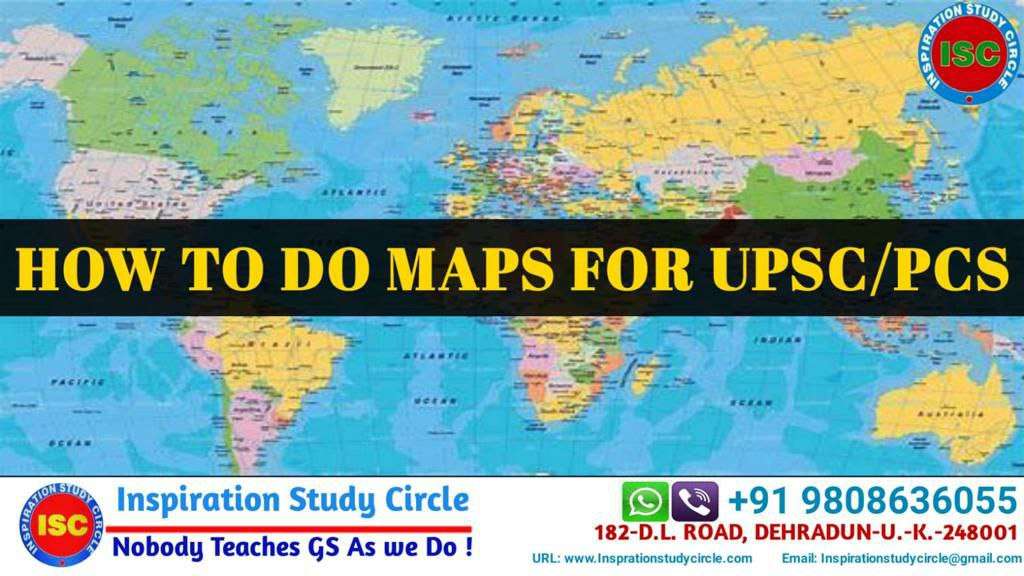
Explained: The Sanchar Saathi App
Explained: The Sanchar Saathi App Table of Contents The Sanchar Saathi app is a security and user-protection platform developed by India’s Department of

Welcome to our comprehensive guide on how to prepare map-based questions for UPSC (Union Public Service Commission) examination. Preparing and studying for UPSC CSE is one back-breaking task that requires an ultimate level of commitment and precision. The Civil Service Exam needs you to be a generalist in everything that goes around the nation and the world. Every year, UPSC outlines various questions, from various fields and topics. However, the overall syllabus and consistency remain the same. The set of Map-Based Questions is one such category.0
The most common question that is asked both by freshers and veterans, concerning the preparation for UPSC CSE, is, “How to prepare Map-Based questions?”
Inspiration Study circle, Dehradun, brings to you the study plan/ pattern to get the best of the questions based on Maps.
What is better than knowing your country first? The best way is to start with the Maps of India. Move from political to physical maps.

Explained: The Sanchar Saathi App Table of Contents The Sanchar Saathi app is a security and user-protection platform developed by India’s Department of

The UKPSC Upper PCS 2025 Mains Result is now out. Check your result and complete details here.

India’s major military exercises in 2025 explained for UPSC 2026–27. Know key exercises, partners, objectives, and defence diplomacy updates in simple notes

UPSC 2026- Effective Time Management and Strategy Table of Contents UPSC 2026- Effective Time Management and Strategy UPSC 2026- Effective

UPSC 2026- 27 FOUNDATION’ Batches Table of Contents The UPSC Civil Services Examination (CSE) is a national-level competitive Examination in

ISC Explains: The 8th Pay Commission Table of Contents ISC Explains: The 8th Pay Commission ISC Explains: The 8th Pay